Related Research Articles
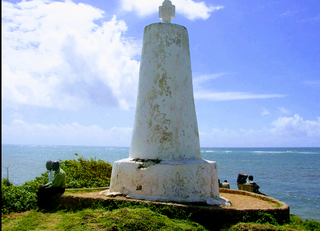
Malindi is a town on Malindi Bay at the mouth of the Sabaki River, lying on the Indian Ocean coast of Kenya. It is 120 kilometres northeast of Mombasa. The population of Malindi was 119,859 as of the 2019 census. It is the largest urban centre in Kilifi County.

Lamu or Lamu Town is a small town on Lamu Island, which in turn is a part of the Lamu Archipelago in Kenya. Situated 341 kilometres (212 mi) by road northeast of Mombasa that ends at Mokowe Jetty, from where the sea channel has to be crossed to reach Lamu Island. It is the headquarter of Lamu County and a UNESCO World Heritage Site.

Pate (Paté) Island is located in the Indian Ocean close to the northern coast of Kenya, to which it belongs. It is the largest island in the Lamu Archipelago, which lie between the towns of Lamu and Kiunga in the former Coast Province. The island is almost completely surrounded by mangroves.

The Lamu Archipelago is located in the Indian Ocean close to the northern coast of Kenya, to which it belongs. The islands lie between the towns of Lamu and Kiunga, near the Coast Province. It is a part of Lamu District.

Lamu County is a county in Kenya located along the North Coast of the country and is one of the six Coastal Counties in Kenya. Its capital is the town of Lamu. It borders Tana River County to the southwest, Garissa County to the north, Somalia to the northeast, and the Indian Ocean to the South.
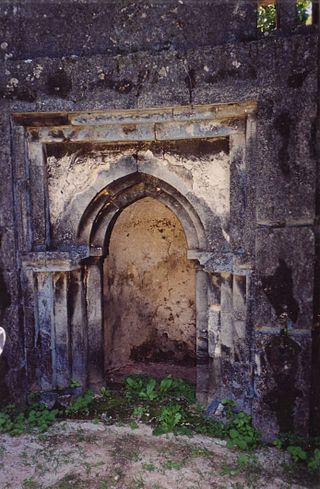
Manda is an island of the Lamu Archipelago of Kenya, known for the prosperous 9th century ports of Takwa and Manda town. The island is now linked by ferry to Lamu and is home to Manda Airport, while Manda Toto island lies to its west. The island is separated from the mainland by the narrow Mkanda channel.
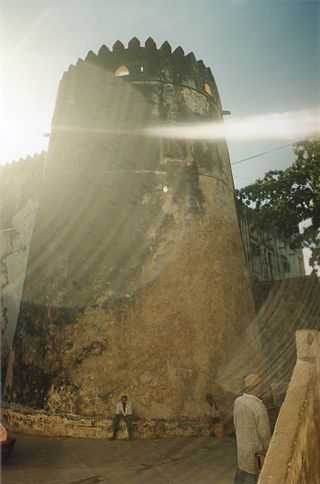
Fumo Madi ibn Abi Bakr was Sultan of Pate, Kenya . Around 1800 the Pate Sultan took over Lamu, however, they were deeply resented by the people of Lamu. Fumomadi was persuaded to build a fort on the seafront in Lamu Town, to protect members of his government. He died before the first storey of the fort was completed.
Antiochia Lamotis, Antiochia in Isauria, or Antiochia super Cragum is a Hellenistic city in ancient Cilicia, Anatolia at the mouth of Lamos river. The site is on the coast a few kilometers southwest of Erdemli, Mersin Province, Turkey.

The Limonlu River, also known as Gökler Deresi, is a river of ancient Cilicia, now in Mersin Province, Turkey.
The Kore of Lamu are a small people living on Lamu Island on the northern Kenya coast. In 1985 they numbered between 200 and 250 people. Their history before 1870 lies with the other Maa peoples in central Kenya. After being defeated by the Purko Maasai in the 1870s, the Kore fled to north-eastern Kenya where they were taken captive by Somali people. After functioning for years as clients or slaves in Somali households, they were set free by British imperial forces around the end of the 19th century. Loss of cattle brought them to Lamu island in the second half of the 20th century. They have lost their own language, a Maa variety, and speak Somali nowadays. They have adopted many Somali customs.
Lamos was a town of ancient Cilicia and later of Isauria, inhabited in Roman and Byzantine times. It was a bishopric; for its ecclesiastical history see Lamus (see).
The Takwa settlement is situated on the south side of Manda Island, in the Lamu District in the coastal province of Kenya. They are the ruins of a town which was abandoned around the 18th century.
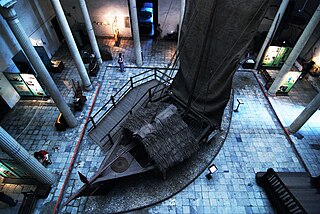
The mtepe is a boat associated with the Swahili people. The mtepe's planks are held together by wooden pegs and coir, so it is a sewn boat designed to be flexible in contrast to the rigid vessels of western technique.
Faza is a small town on the North coast on Pate Island, within the Lamu Archipelago in Kenya's former Coast Province.

Siyu is a settlement on the north coast of Pate Island, within the Lamu Archipelago in Kenya's Coast Province.
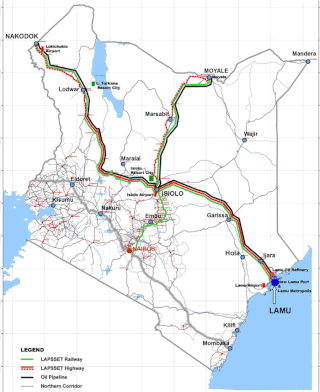
Lamu Port-South Sudan-Ethiopia-Transport (LAPSSET) Corridor project, also known as Lamu corridor is a transport and infrastructure project in Kenya that, when complete, will be the country's second transport corridor. Kenya's other transport corridor is the Northern Corridor, which links Mombasa to Uganda, passing through Nairobi and much of the Northern Rift. Some basic LAPSSET infrastructure has been built. The construction of LAPSSET's main components is currently ongoing with construction of the first berth at Lamu Port completed in October 2019.. Although the project is not formally stalled, its short to medium term success looks increasingly unlikely. Insecurity and political instability in Kenya are mostly to blame for this, as are more commercially viable alternative pipeline options through Tanzania or Ethiopia. The low oil prices since 2015 also affect LAPSSET's commercial prospects.
Lamu is a highly endangered Loloish language of northeastern Binchuan County, Yunnan. According to Bradley (2007), the Lamo language is similar to Lisu and Lipo, although the speakers are classified by the Chinese government as ethnic Lahu. There are only about 100 speakers left, all of whom are also first-language speakers of Lipo. Lamo speakers were located by Bradley in 1999.

The Witu Forest, is a protected area in Lamu District, Kenya, East Africa. It was formed in 1927 by combining the Utwani Forest Reserve with the adjacent Gongoni Forest Reserve, although the previous names remained in use. The independent Kenyan government confirmed the reservation, gazetting the forest in 1962, with 701 hectares more gazetted in 2002. The forest covers 4,639 hectares of gazetted land, with approximately 900 hectares of additional un gazetted, but enclosed, forest. The adjacent Mungajini Forest on the Nairobi Ranch contains approximately 1,100 hectares. As of 2007, there was no management plan for the forest, although it is to be managed under the Forests Act, 2005, by the Kenya Forest Service (KFS) which replaced the prior Forest Department in 2005.
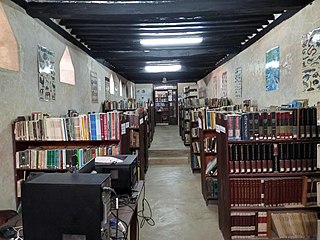
Lamu Fort Library is a branch of the National Museums of Kenya. The Library was initiated in 1978 as a reference library for museum's staff and researchers. In 1986 it was relocated to a more specious room at the Lamu Fort Museum.
References
- ↑ Martin, 1973, p. 7
- Sources
- Martin, Chryssee MacCasler Perry and Esmond Bradley Martin: Quest for the Past. An historical guide to the Lamu Archipelago. 1973.
